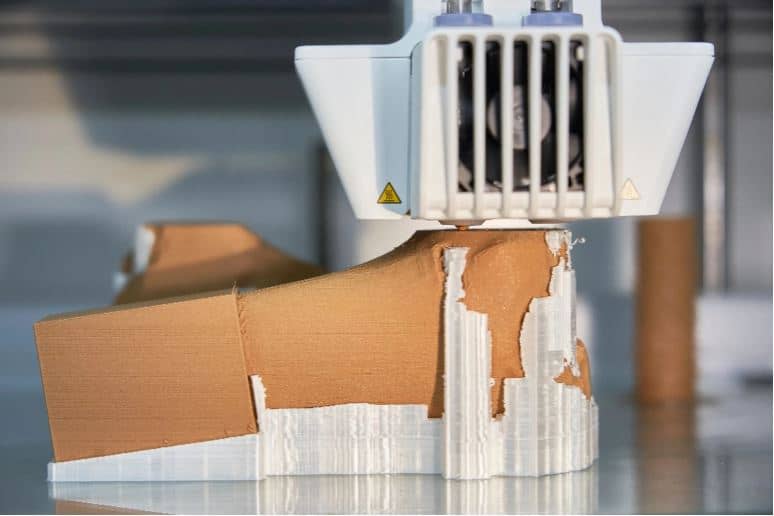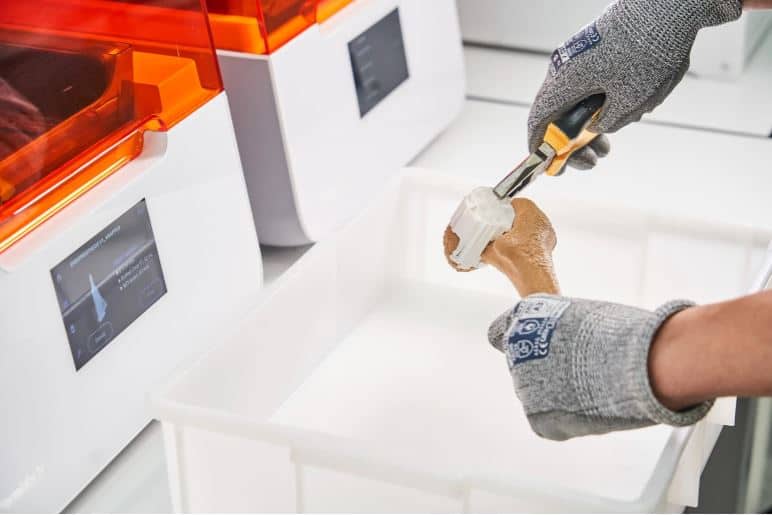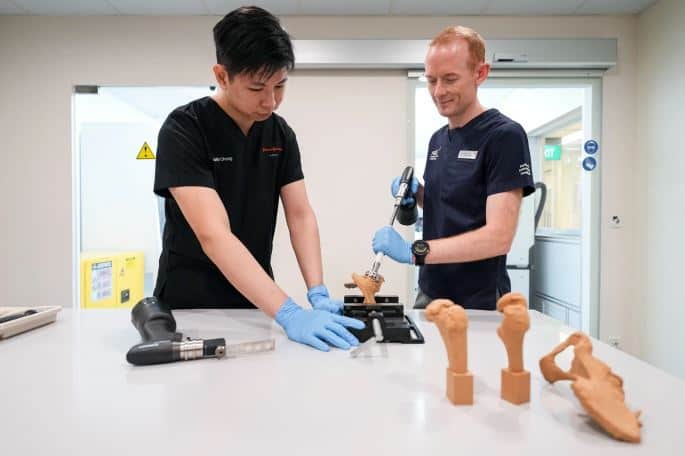From food, like pizza and steak, to an electric violin or even a full-sized kayak, it’s clear how much 3D printing has grown in the past few years. Medical institutions have even gone as far as using the technology to print organs for even faster organ transplants.
As the latter has been receiving positive responses especially in the healthcare community, tremendous growth is expected to result from this in the next few years. Healthcare 3D printing has been valued at over US$1.7 billion in 2020.
In the hope of accelerating healthcare innovation in Singapore as early as now, Johnson&Johnson Singapore together with the National University Hospital (NUH) has launched a 3D Printing Point-of-Care Collaboration. This effort is seen to significantly improve patient care capability as well as personalised healthcare. The Singapore Economic Development Board (EDB) has also shown support for this initiative, which is a first in the country.
Pushing boundaries while elevating patient care, surgical 3D printing is set to elevate current standard patient care in the country, resulting in better patient outcomes.
Managed by J&J Singapore, the newly-launched 3D printing Point of Care Lab is located in NUH and is manned by biomedical engineers who will work with NUH clinicians. Together, they will design and produce highly-personalised anatomical models to be used for preoperative planning and surgical simulation.
For a start, the lab can utilise a patient’s CT scan to produce patient-specific anatomical models such as hips and knee joints currently, with plans to produce other medical devices and instruments such as surgical guides for complex surgery in the near future.
 Credit: NUH
Credit: NUH
As surgery can be a stressful experience for patients and their respective families, NUH and J&J Singapore aim to alleviate that through 3D printing. By making use of patient-specific anatomical models, surgeons will be able to use these as visual tools to educate and reassure patients and their families, reducing stress and anxiety ahead of the scheduled surgery.
“Johnson & Johnson has been pioneering innovative and personalised healthcare solutions that improve patients’ lives. With growing patient demands for more personalised care, it is our great honour to collaborate with National University Hospital to launch the first dedicated 3DP Point-of-Care collaboration in Singapore. The collaboration is also the first in Asia for Johnson & Johnson to provide technological solutions for clinical care within a hospital. Together with NUH and our strategic partners in the healthcare ecosystem, we are excited to accelerate the adoption of personalised 3D printing innovation and develop new solutions to address hospital and patient needs in Singapore,” said Guillermo Frydman, Managing Director, Johnson & Johnson Singapore.
 Credit: NUH
Credit: NUH
This partnership is expected to be a fruitful one, not just for patients but also for NUH and J&J Singapore. Through 3D printing Point-of-Care, surgeons and clinicians will be able to gain access to J&J Singapore’s expertise in the field of 3D printing for preoperative planning.
With so many exciting developments and opportunities opening up for 3D printing, it may be surprising to know that this technology has been around since the ‘80s.
Also known as additive manufacturing, 3D printing is believed to have started in Japan. Hideo Kodama, a Japanese automobile designer was in the process of developing a rapid prototyping system which resulted in a layer-by-layer approach for manufacturing that makes use of photosensitive resin and UV light. However, the designer was not able to file a patent for this new technology and in a few years, a group of French researchers also tried to create a rapid prototyping machine.
Instead of resin, it makes use of cured liquid monomers that are turned into solids with the use of a laser. But just like Kodama, the French researchers were also unable to file a patent for the technology they discovered. In 1986, American furniture builder, Charles Hull was able to submit a patent for a technology he discovered, stereolithography (SLA), a system that creates 3D models through curing photosensitive resin layer per layer.
 Credit: NUH
Credit: NUH
Just like 3D printing’s long history, its future is set to be filled with even more discoveries on its many benefits. This new partnership between J&J Singapore and NUH will allow for a deeper understanding of the three-dimensional relationship of areas being operated on as well as enable medical practitioners to plan safer and more efficient ways to perform surgeries. Such benefits will also lead to a reduction of time spent on surgeries as well as costs.
Professor James Hui, Head and Senior Consultant, Department of Orthopaedic Surgery, NUH said, “We are pleased to collaborate with Johnson & Johnson and we look forward to exploring many more industry collaborations to push the boundaries for 3D printing in surgery and healthcare innovation. As a leading academic healthcare institution that greatly values and excels in research in innovation, NUH will tap on the 3D Printing Point of Care Lab to improve our clinical outcomes with personalised anatomical models and pioneer the development of new surgical techniques to deliver incredible care to our patients. The facility will also enhance our training and education of new surgeons and clinicians.”


